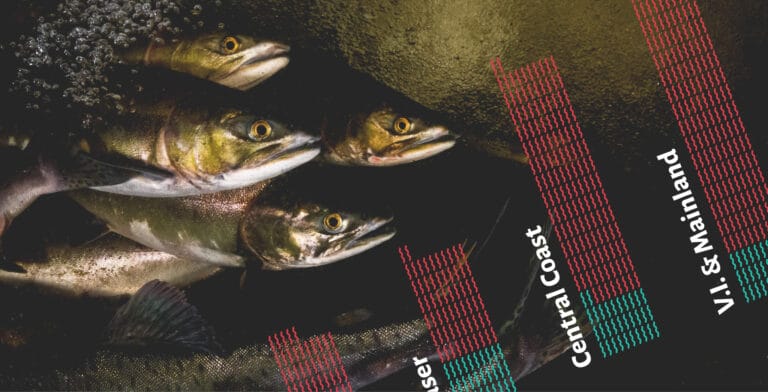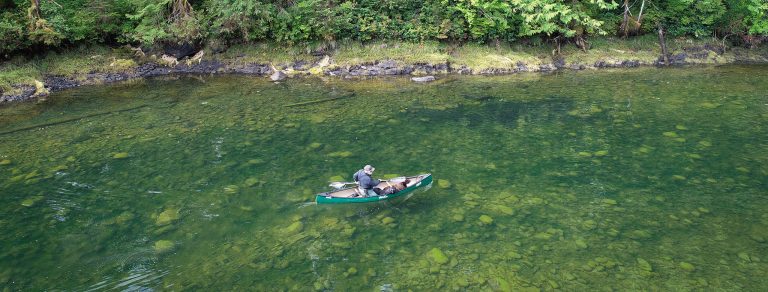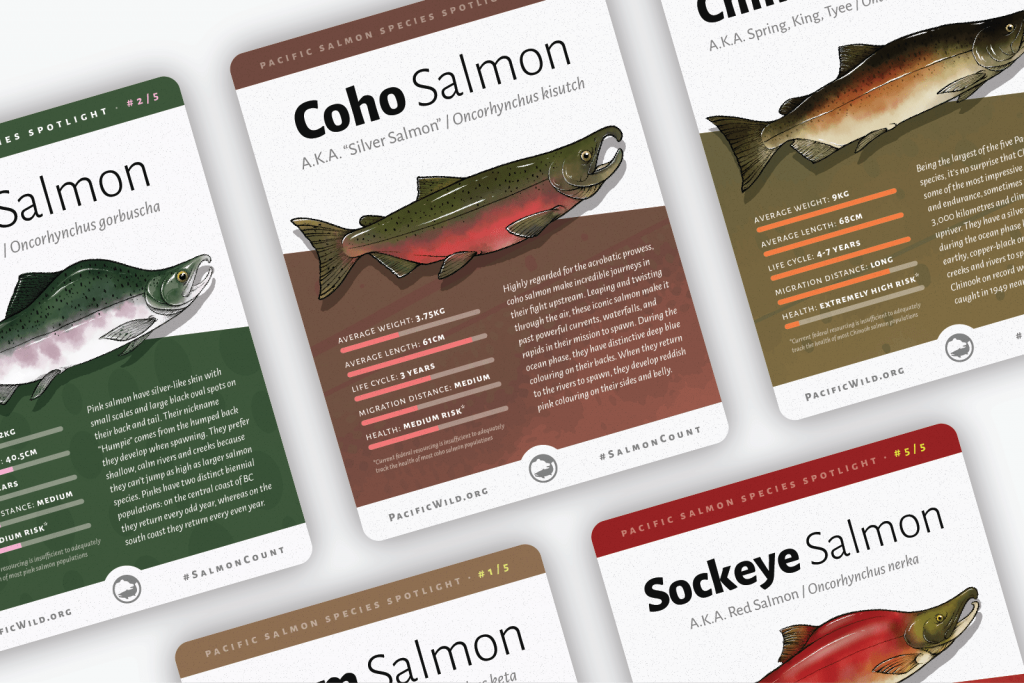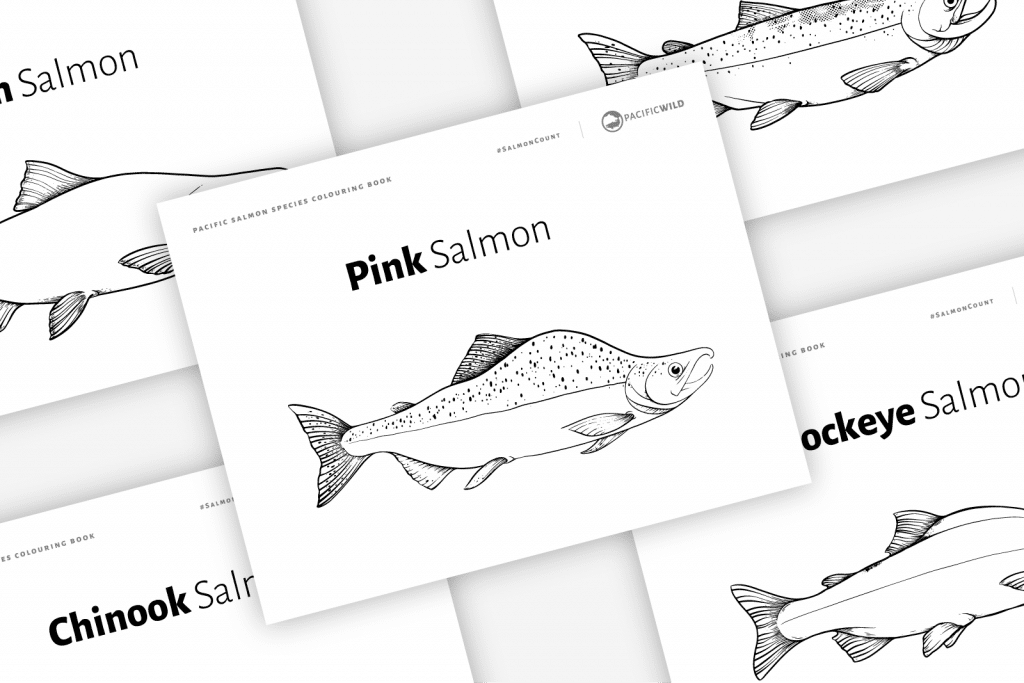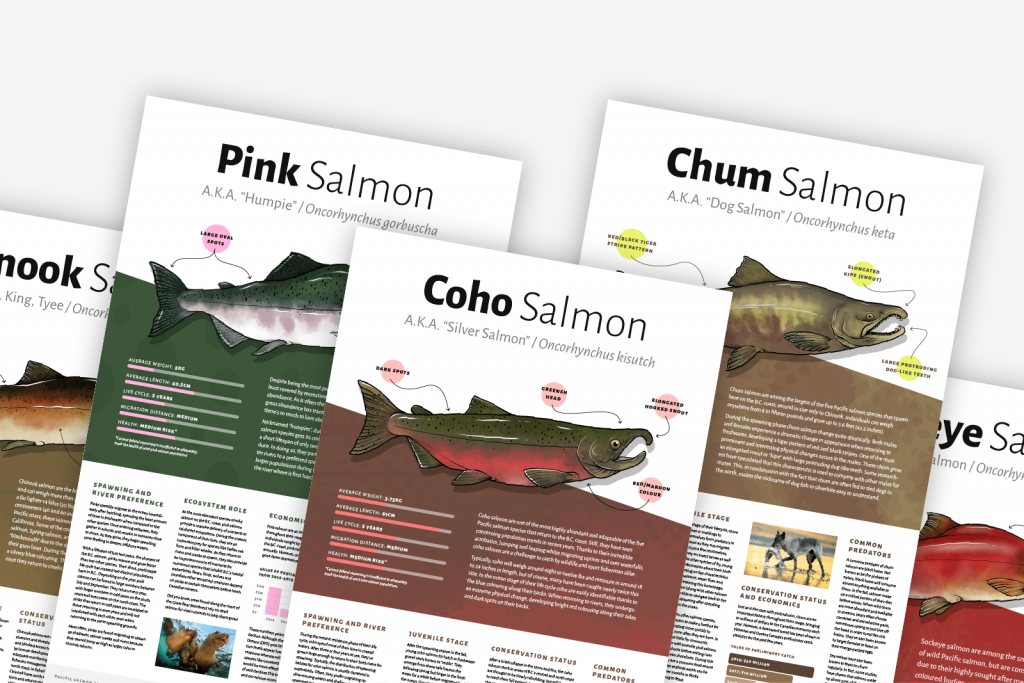As salmon populations decrease or disappear altogether, coastal ecosystems, culture and economies are drastically impacted. The enormous benefit that salmon provide for countless species and the overall health and function of the coast is what makes salmon a foundational species — an integral species which ecosystems depend on, with drastic changes resulting if they are removed. Each part of a salmon’s life cycle is heavily interconnected with its surrounding environment.
A foundation species is important because of the role it plays due to its large biomass in the ecosystem, and the strong influence this has on structuring a community.
salmon feed our coast
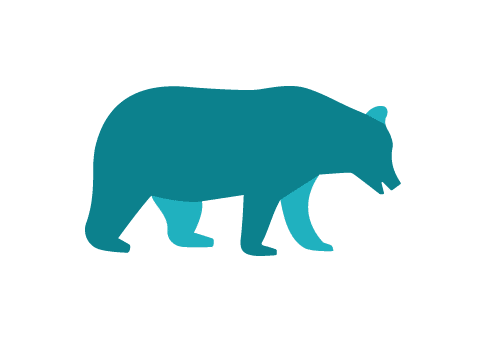
land mammals
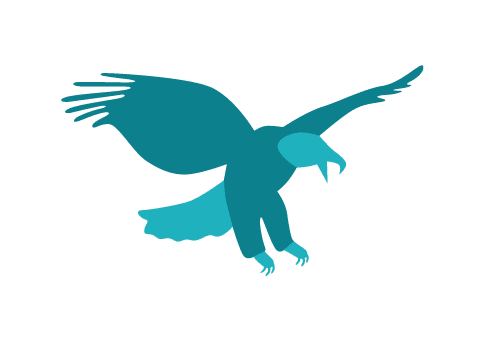
birds
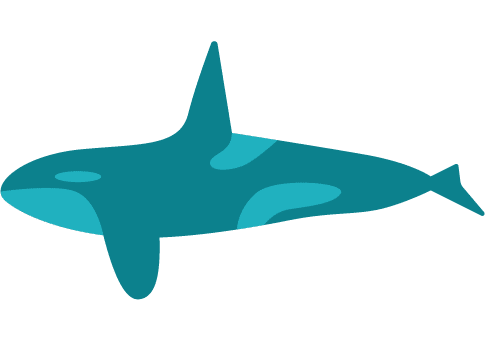
marine mammals
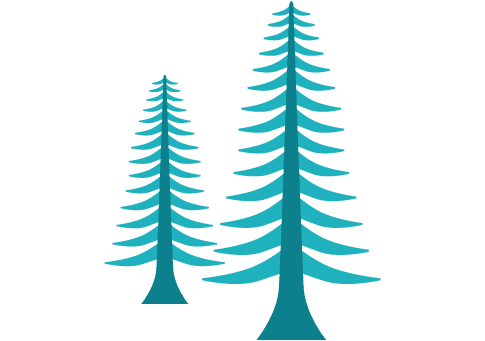
forests
Pacific salmon are mostly anadromous, meaning they are born in freshwater, migrate to the ocean, and then migrate back to freshwater, spawn and die immediately after. On their journey to the ocean, more than 50 per cent of their diet is insects which fall into streams from surrounding tree canopies.[1,][2] Juvenile salmon are the primary insect predator in aquatic environments; however, when they die their carcasses support over 60 species of insect.[3] When salmon return to their native streams to spawn, their energy-rich carcasses and eggs are consumed by a variety of predators in coastal watersheds, including wolves, bears, and scavenging birds. In some cases, the diets of wolves can consist of almost 50 per cent salmon, with the rest made up of small animals in their ecosystems.[4] Coastal wolves are only one of many species that have uniquely co-evolved alongside wild salmon over millennia.
A keystone species has an influence on its environment that is disproportionate to its abundance.
Salmon support populations of eagles, gulls, sea birds and more by providing them with nutrients essential for overwinter survival and migrations. The amount of salmon in a stream has been shown to be an indicator of the density and diversity in species of birds in the surrounding ecosystem.[5] Pacific salmon populations are important for the survival of diverse and large assemblages of resident and migratory birds, and their disappearance would mean the decline of many bird species.
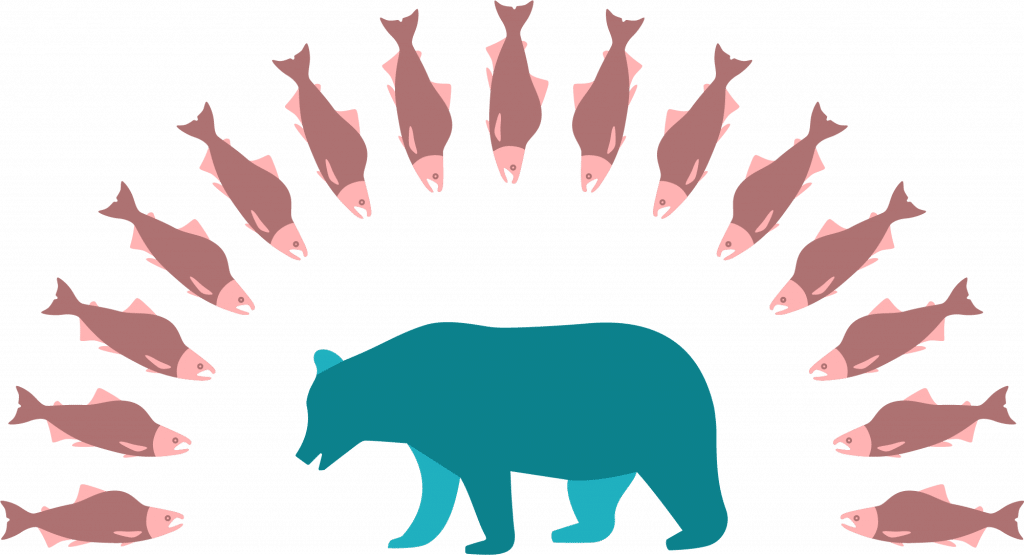
In areas where salmon are abundant, bears will eat up an average of 15 salmon per day, a significant portion of their diet
Salmon are an important source of nutrients for bears in coastal watersheds as well. The population density of bears can be up to 20 times greater in areas where salmon are abundant, versus areas where they do not occur.[6] In areas where salmon are abundant, bears will eat an average of 15 salmon per day, a significant portion of their diet.[7] Coastal bears get from 33-94 per cent of their annual protein from salmon through scavenging for dead carcasses and capturing them in streams.[8] Without salmon as a food source, populations of bears would likely become severely at-risk or be displaced.
There are five species of Pacific salmon. Many of them play a significant role in the survival of certain ocean species during their time in the ocean. For example, the Chinook salmon are the primary prey for the critically endangered southern resident killer whale population, making up to 90% of their diet during the months of July and August.[9] At certain points of the year, salmon also provide an important food source for other species of marine mammal, like pinnipeds (seals and sealions) as well as sharks and other large fish offshore. If populations of Chinook, and other salmon species, continue to decline, there will likely be major correlating impacts on the food web. Apex predators, like Southern Resident killer whales, will be at risk of extinction.
When salmon die at the end of their life cycle, their carcasses provide valuable nutrients to streams and rivers, providing a significant increase in organic matter and nutrients which is believed to enhance the productivity of the surrounding ecosystem.[10] These nutrients are transferred to all levels of the food chain, and in some cases, species adjust their survival strategies to capitalize on the additional resources.[11] Throughout their life cycle, salmon fundamentally transform the way ecosystems function, creating the foundation of watersheds by playing the roles of both predator and prey, and by releasing important nutrients back in the ecosystem after they spawn.
Works Cited
- Allan, J. D., M. S. Wipfli, J. P.Caouette, and A. Prussian. (2003). Influence of streamside vegetation on inputs of terrestrial invertebrates to salmonid food webs. Canadian Journal of Fisheries and Aquatic Sciences, 60: 309-320.
- Baxter, C. V. , K. D. Fausch, and W. C. Saunders. (2005). Tangled webs: reciprocal flows of invertebrate prey link streams and riparian zones. Freshwater Biology, 50: 201-220.
- Hocking, Morgan & Ring, Richard & Reimchen, Thomas. (2009). The ecology of terrestrial invertebrates on Pacific salmon carcasses. Ecological Research, 24. 1091-1100. 10.1007/s11284-009-0586-5.
- Stanek, A. E., Wolf, N., Hilderbrand, G. V., and Mangipane, B. (2017). Seasonal foraging strategies of Alaskan gray wolves (Canis lupus) in an ecosystem subsidized by Pacific salmon ( Oncorhynchus spp.). Canadian Journal of Zoology, 95: 555-563.
- Field, R. D., and Reynolds, J. D. (2012). Ecological links between salmon, large carnivore predation, and scavenging birds. Journal of Avian Biology, 44: 9-16.
- Reimchen, T. E. (2000). Some ecological and evolutionary aspects of bear-salmon interactions in coastal British Columbia. Canadian Journal of Zoology, 78: 448-457.
- Ibid.
- Klinka, D. R., and Reimchen, T. E. (2009). Darkness, Twilight, and Daylight Foraging Success of Bears (Ursus americanus) on Salmon in Coastal British Columbia. American Society of Mammalogists, 90: 144-149.
- DFO. (2010). Chinook salmon abundance levels and survival of resident killer whales. DFO Can. Sci. Advis. Sec., Sci. Advis. Rep. 2009/075.
- Holtgrieve, G. W., and Schindler, D. E. (2011). Marine-derived nutrients, bioturbation, and ecosystem metabolism: reconsidering the role of salmon in streams. Ecological Society of America, 92: 373-385.
- Ibid.
